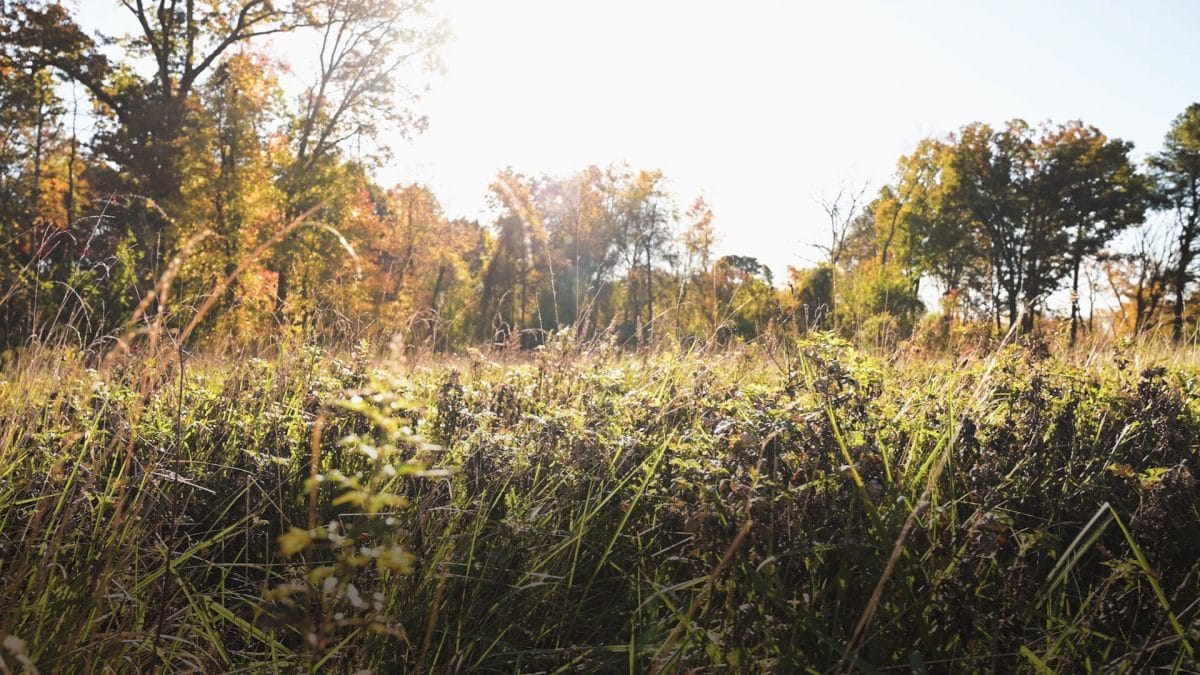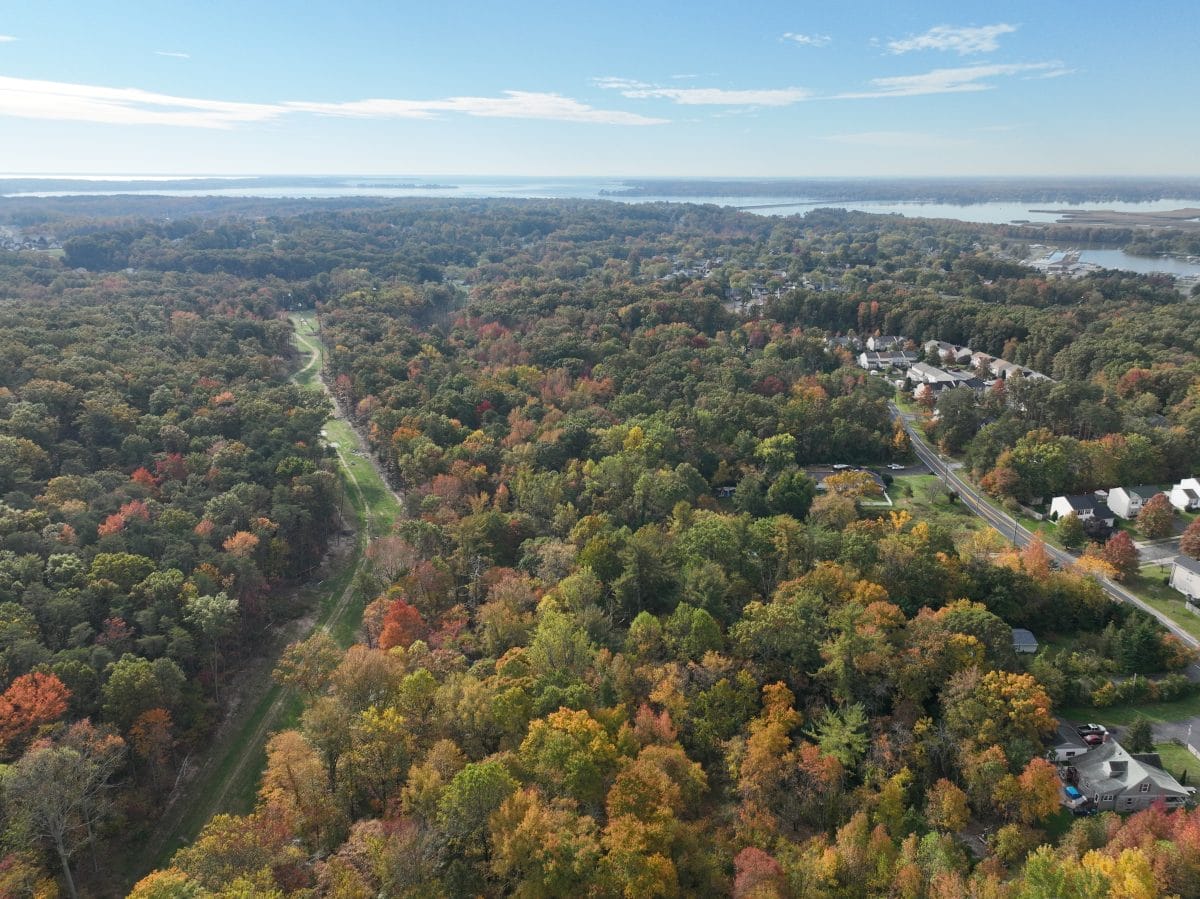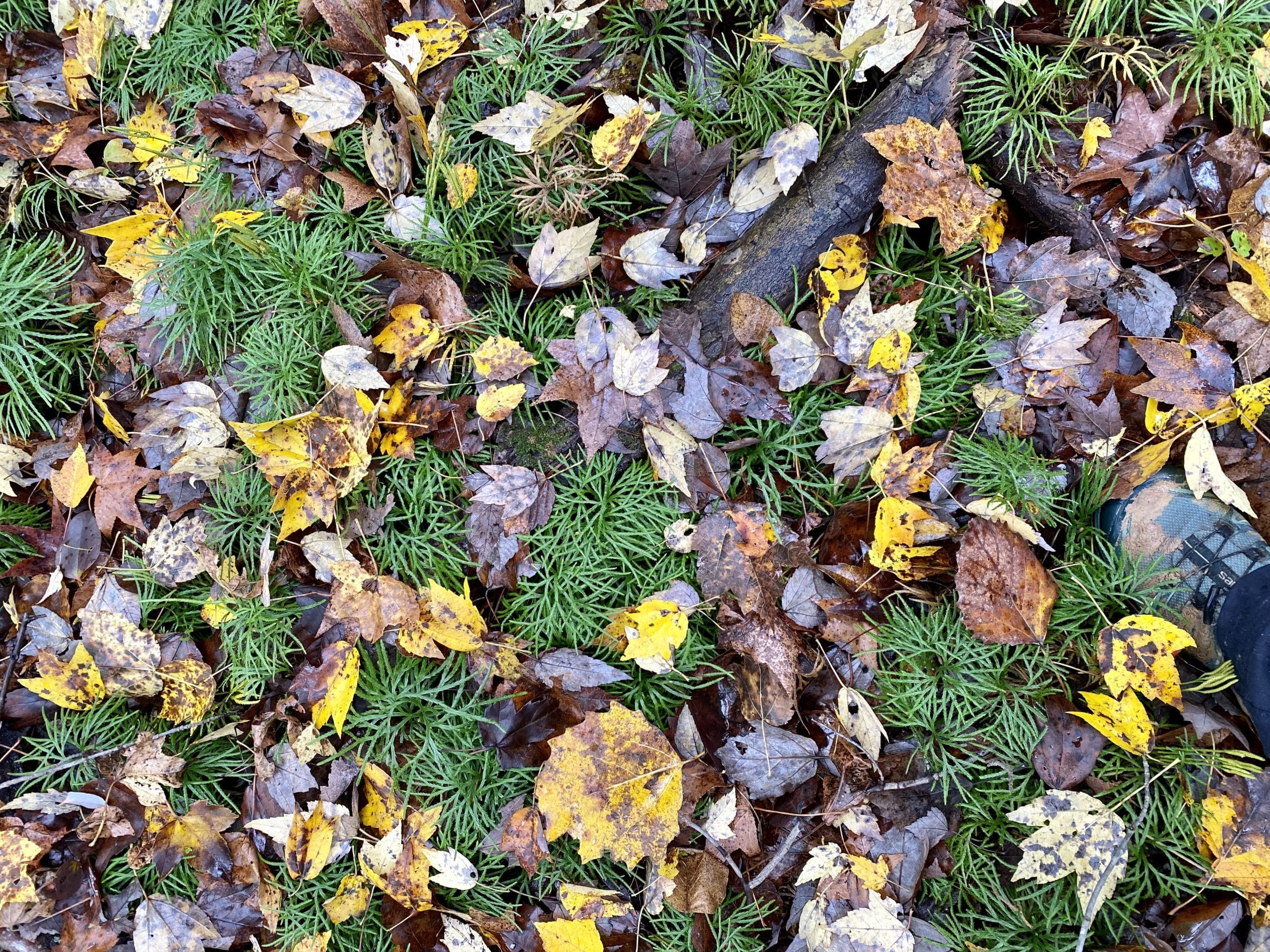Foster Branch Park
Harford County Government
Foster Branch Park is the County’s newest public park and is permanently preserved with a conservation easement through Maryland’s Program Open Space.
On January 31, 2024, Harford County Government purchased 129-acres of open space in Joppatowne on the eastern side of Trimble Road in collaboration with Harford Land Trust (HLT), Maryland Department of Natural Resources, and Aberdeen Proving Ground (APG). Foster Branch Park is the County’s newest public park and is permanently preserved with a conservation easement through Maryland’s Program Open Space.
“We are excited that this beautiful land, which was once planned for residential development, will become a new park for everyone to enjoy. I would like to thank our partners for helping to make this acquisition possible and I look forward to celebrating the park’s grand opening with the Joppa/Joppatowne community.”
Harford County Executive Bob Cassilly
Location and Background
Foster Branch Park is irregularly shaped and has two large sections with access off Trimble Road. A newly constructed sewer line cuts through the property parallel to the stream, Foster Branch.
The portion to the west of stream is approximately 44 acres. It is near the mobile home park off Williams Lane and adjacent to the future Ridgely’s Reserve residential community. This section was once an active farm selling fresh produce to the local community. This section is relatively flat and contains remnants of the homesite and an open agricultural field.
The portion to the east of the stream, approximately 85 acres, is between the elongated lots off Trimble Road and Dembytown Road and connects to Robert Copenhaver Park. Dembytown is a historic African American community founded in 1917 by families who moved from their farms in Gunpowder Neck after the federal government acquired their land for Edgewood Arsenal.
Acquisition
Harford Land Trust first approached the Salvo and Vickers families with interest in acquiring the property in 2020. The families had been longtime co-owners of the property through various property-specific LLCs. They purchased it in pieces between 2002 and 2018 with the intention of pursuing a large residential development.
The bulk of the land was subdivided in 2008 into 232 single-family home lots known as “Foster’s Run”. Following an unsuccessful application to change the property’s zoning from R1 to R3 in 2020, the owners pursued preliminary plan approval for an additional 265 single-family home lots.
Following extensive interaction with the land trust, in late 2022, the Salvos and Vickers agreed to pause engineering and entertain a possible purchase of the property for public parkland.
Given the property’s proximity to APG, HLT engaged its partners at the installation as a candidate for the Army Compatible Use Buffer (ACUB) program. Through this program, HLT and APG work together to preserve land outside of the installation to reduce incompatible development and protect habitat.
HLT also informed the Harford County Government of its intention to purchase the property and began vetting it as a candidate for Maryland’s Program Open Space funds. Managed by Maryland’s Department of Natural Resources, Program Open Space is funded by the State real estate transfer tax and is the primary funding source for State and local government parkland acquisitions.
Harford County Government was immediately enthusiastic about the project, given its longstanding commitment to acquire additional parkland in the Joppa-Joppatowne area.
Ultimately, the partnership entered into an agreement of sale with the Salvo and Vickers families in July 2023 for a purchase price of $8,600,000. The settlement took place on January 31, 2024. The acquisition and transaction costs were co-funded by Maryland’s Program Open Space, Harford County Government, and APG in partnership with the land trust.
The sellers thank Harford County Government and Harford Land Trust for their partnership in this transaction. The Salvo and Vickers families are lifelong supporters of youth sports and outdoor recreation. The sellers requested jointly that one facility at the park, such as a recreation field or walking trail, be named after Joseph C. Salvo, Jr. and Sandra W. Salvo and another facility named after Charles L. Vickers, Jr.

Preservation and Recreation
The property will be managed by Harford County Parks & Recreation and is within the Joppa-Joppatowne Recreation Council area. According to the County’s most recent Land Preservation, Parks & Recreation Plan, the Joppa-Joppatowne Recreation Council served just over 11,000 residents in 2019. The Rec Council is projected to grow as the population is expected to be near 13,500 by 2030.
The Joppatowne area has long been identified as having a gap in acreage for both active and passive recreation. Maryland’s Park Equity Mapper also shows the Joppatowne, Magnolia, and Edgewood areas as having “low equity” of park access based on analyzing demographic, economic, and proximity to park data.
Joppatowne High School and Magnolia Middle School are close to the new Foster Branch Park, providing ample opportunities for collaboration with the public school system. The property’s adjacency to Robert Copenhaver Park will extend the existing greenway trail and provide new pedestrian connections from neighboring communities.
A permanent Maryland Program Open Space conservation easement protects the Park. The easement includes an allowance for recreation-related development such as parking, bathrooms, and recreation courts and fields on the flatter western portion of the property. Outside of the active recreation development area, the remainder of the property can only be helpful for passive forms of recreation, such as walking trails.
Ecological significance
The property is within the Gunpowder River watershed. Harford County has mapped the property as a core Green Infrastructure area, the most ecologically valuable area, and an area of highest Conservation Value. Over 4,000 linear feet of Foster Branch flows through the park before entering the Gunpowder River at Mariner Point Park.
Foster Branch Park is located on the Fall Line, which separates the Piedmont Plateau to the west from the Atlantic Coastal Plain to the east. This figurative line represents a geological transition from hard bedrock to softer sediments.
Foster Branch Park is likely home to one or more regionally rare coastal plain acidic seepage bog types. The property’s linear, downslope-facing runs of lush magnolias, shrubs, and ferns indicate magnolia seepage bogs. These kinds of bogs are hydrologically different from what people usually think of when they hear the term “bog.” The spring-fed water features are not the tub-like collections of organic material of rainwater-fed bogs. Instead, magnolia seepage bogs occur only where a perched water table leaks out from between an upper layer of porous sand and gravel and a lower layer of impervious clay. Joppa is well known for having both. How these soil layers sit on top of each other makes Foster Branch Park unique and creates seepage bog habitats.
The hills on the eastern portion of the property e are made of sand and clay layers that would have been deposited by the melting glaciers millions of years ago. And in the time since, the calcium and other nutrients would have leached out of the sand and gravel layer, leaving it relatively acidic and infertile. A perched sand and gravel formation like this holds a large volume of clean, filtered water. At Foster Branch Park, the water seeps downslope and collects at the bottom of the hill (where another bog type probably occurs), forming the stream that becomes Foster Branch.
The property’s combination of geological and hydrologic factors produces a characteristic plant community structure with limited distribution and occurrence in Maryland. At the property’s high point is an acidic-loving, dry soil adapted plant community that includes pine barren-like habitat mixed with some hardwoods, a dense covering of acid-loving heaths (ericads), and vacciniums. A little further downhill, where the seeps begin, there are thick patches of heaths and carpets of Lycopodium “Ground Pines”. The seeps are saturated year-round, so they support magnolia trees, dense stands of mountain laurel and other shrubs, and patches of sphagnum moss in places.
Such bog sites are also home to rare insect species, including specialist dragonflies and damselflies. Foster Branch Park is predominately wooded, making it ideal for a host of forest interior dwelling (FID) songbirds, owls, and woodpeckers.

Foster Branch Park is arguably one of the most ecologically unique properties in Harford County. Its location in Joppatowne, a densely populated area within the Development Envelope, created opportunities and challenges for the land trust.
The property was ideal to provide much needed public parkland to an area with very little remaining open space. But the development project was nearly shovel-ready, and the price was high. This acquisition is HLT’s most expensive project to date. The project was only made possible by the collaborative effort of federal, state, and local government partners.
The transaction was a rollercoaster, like so much of HLT’s work. Competition for open space in Harford County is fierce. Land is getting more expensive by the day. But, for the moment, Harford Countians should celebrate this incredible land preservation success and look forward to their first visit to Foster Branch Park.

Our Work Depends on You
Harford Land Trust can save more land in Harford County, Maryland, because of generous people like you.
